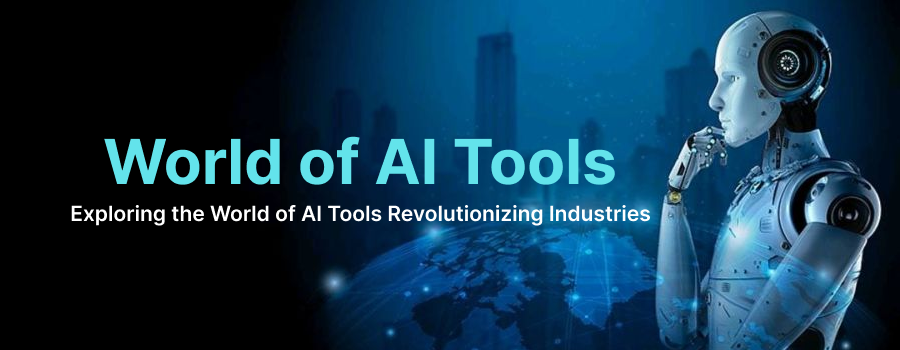Posted on: Jul 19, 2024
Estimated reading time: 0 minutes
Exploring the World of AI Tools: Revolutionizing Industries

1. TensorFlow
Overview: Developed by Google Brain, TensorFlow is an open-source machine learning framework. It's widely used for both research and production at Google.
Key Features:
Comprehensive ecosystem for machine learning and deep learning.
Provides support for a variety of platforms, including mobile and edge devices.
Various libraries are available for processing natural language and image recognition.
Use Cases:
Image classification and recognition.
Voice recognition systems.
Predictive analytics in healthcare.
2. PyTorch
Overview: PyTorch is a machine learning library developed by Facebook's AI Research lab known for its ease of use and dynamic computational graph.
Key Features:
Building complex architectures is made easier with dynamic graphing.
Strong community support and extensive documentation.
Integrates seamlessly with Python, making it accessible for developers and researchers.
Use Cases:
Natural language processing (NLP) tasks.
Reinforcement learning.
Neural network research.
3. OpenAI GPT-4
Overview: The fourth iteration of OpenAI's Generative Pre-trained Transformer model, GPT-4, is renowned for its advanced language processing capabilities.
Key Features:
Generates human-like text based on input prompts.
Can perform various tasks like translation, summarization, and text generation.
Highly versatile and applicable across different industries.
Use Cases:
Content creation and editing.
Customer service chatbots.
Educational tools and tutoring.
4. Hugging Face Transformers
Overview: Hugging Face provides an open-source library that focuses on NLP. It has become a go-to resource for implementing state-of-the-art models.
Key Features:
Supports a variety of transformer models like BERT, GPT, and T5.
User-friendly interfaces for training and deploying models.
Integrates with both TensorFlow and PyTorch.
Use Cases:
Sentiment analysis.
Language translation.
Question answering systems.
5. IBM Watson
Overview: IBM Watson is a suite of AI tools and applications that leverage machine learning and natural language processing.
Key Features:
Offers APIs for various AI services like speech-to-text, text-to-speech, and visual recognition.
Strong focus on enterprise solutions.
Supports multi-cloud environments.
Use Cases:
Healthcare diagnostics.
Financial services and fraud detection.
Personalized customer experiences.
6. Microsoft Azure AI
Overview: Microsoft Azure AI provides a robust platform with a suite of AI services, including pre-built APIs and tools for building custom machine learning models.
Key Features:
Pre-built AI services for vision, speech, language, and decision-making.
Integration with Azure’s cloud computing services.
Scalable solutions for enterprises.
Use Cases:
Business intelligence and analytics.
Chatbots and virtual agents.
Automated customer support.
7. Amazon SageMaker
Overview: Amazon SageMaker is a fully managed service that provides every developer and data scientist with the ability to build, train, and deploy machine learning models quickly.
Key Features:
A comprehensive suite of tools for the entire machine-learning workflow.
Integrated with AWS services for seamless deployment.
Provides managed Jupyter notebooks.
Use Cases:
Predictive maintenance.
Fraud detection.
Personalized recommendations.
AI apparatuses are revolutionizing businesses by computerizing forms, giving bits of knowledge, and upgrading human capabilities. Whether you are an engineer, analyst, or trade proficient, understanding and leveraging these apparatuses can drive development and productivity in your field. As AI innovation proceeds to advance, remaining educated approximately the most recent devices and their applications is basic for tackling their full potential.